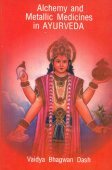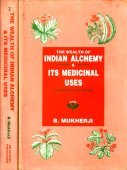Himsa, Hiṃsā: 18 definitions
Introduction:
Himsa means something in Buddhism, Pali, Hinduism, Sanskrit, Jainism, Prakrit, Marathi, Hindi. If you want to know the exact meaning, history, etymology or English translation of this term then check out the descriptions on this page. Add your comment or reference to a book if you want to contribute to this summary article.
Alternative spellings of this word include Hinsa.
In Hinduism
Dharmashastra (religious law)
Source: Wisdom Library: Dharma-śāstraHiṃsā (हिंसा) refers to “violence, hurting”. It is the opposite of non-violence, non-hurting (ahiṃsā). It is used throughout Dharmaśāstra literature such as the Manusmṛti and the Baudhāyana-dharmasūtra.

Dharmashastra (धर्मशास्त्र, dharmaśāstra) contains the instructions (shastra) regarding religious conduct of livelihood (dharma), ceremonies, jurisprudence (study of law) and more. It is categorized as smriti, an important and authoritative selection of books dealing with the Hindu lifestyle.
Purana and Itihasa (epic history)
Source: Cologne Digital Sanskrit Dictionaries: The Purana Index1a) Hiṃsā (हिंसा).—Born of Lobha and Nikṛti;1 wife of Kali, of bad mind.2
1b) One of the five heinous sins—narrated to Indra by Bṛhaspati; it is a sin against men, women, animals, and creatures of all sorts. Exceptions are given. Any man of any caste or any animal attacking may be attacked and killed in self-defence; this applies to family members also; wild animals like lions and tigers may be killed by the King for the benefit of Gods and Brahmans, and not for self-enjoyment; Bhagavatī Māyā created men and Gods and 14 kinds of animals as also sacrifices and ordered the worship of Gods by sacrificing Paśu to get oneself blessed with health and wealth; Paśus may be killed for Gods, Pitṛs, and for feeding great and respectable persons; in times of danger no sin in the eating of flesh by Brahmans; animals could be sacrificed in honour of Śakti.*
- * Brahmāṇḍa-purāṇa IV. 6. 37-67.
1c) Gave birth to Nikṛti (daughter) and Anṛta (son) by Adharma.*
- * Vāyu-purāṇa 10. 39; Viṣṇu-purāṇa I. 7. 32.

The Purana (पुराण, purāṇas) refers to Sanskrit literature preserving ancient India’s vast cultural history, including historical legends, religious ceremonies, various arts and sciences. The eighteen mahapuranas total over 400,000 shlokas (metrical couplets) and date to at least several centuries BCE.
Yoga (school of philosophy)
Source: ORA: Amanaska (king of all yogas): A Critical Edition and Annotated Translation by Jason BirchHiṃsā (हिंसा) refers to “violence (to living beings)”, according to the Bhojadeva’s Rājamārtaṇḍa (commentary on Yogasūtra of Patañjali) Sūtra 2.29.—Accordingly, while discussing Prāṇāyāma and Samādhi: “In this system, some [of the auxiliaries] such as concentration directly assist Samādhi; some [others] such as Yamas and the like, assist Samādhi [indirectly] by destroying hindrances such as violence to living beings (bhūta-hiṃsā) [which is] contrary [to the aim of Samādhi]. Among these, posture and the like help the higher [auxiliaries]. For example, when posture is mastered, steadiness [of the body is achieved] for Prāṇāyāma. Thus, it also applies to the higher [auxiliaries]”.

Yoga is originally considered a branch of Hindu philosophy (astika), but both ancient and modern Yoga combine the physical, mental and spiritual. Yoga teaches various physical techniques also known as āsanas (postures), used for various purposes (eg., meditation, contemplation, relaxation).
In Buddhism
Mahayana (major branch of Buddhism)
Source: academia.edu: A Study and Translation of the GaganagañjaparipṛcchāHiṃsā (हिंसा) refers to “harm” (as opposed to Ahiṃsā—‘harmlessness’), according to the Gaganagañjaparipṛcchā: the eighth chapter of the Mahāsaṃnipāta (a collection of Mahāyāna Buddhist Sūtras).—Accordingly, “[...] Ratnapāṇi said: ‘Son of good family, what are those sixteen dharmas included in?’ Gaganagañja said: ‘Son of good family, the sixteen dharmas are included in thirty-two dharmas. What are those thirty-two? [...] (5) the great friendliness is included in the unhindered thought and the equal attitude to all living beings; (6) the great compassion is included in indefatigability and works to be done for all beings; (7) the purity of body is included in harmlessness (ahiṃsā) and contentment with one’s own possessions; (8) the purity of thought is included in self-control and calmness; [...]’”.

Mahayana (महायान, mahāyāna) is a major branch of Buddhism focusing on the path of a Bodhisattva (spiritual aspirants/ enlightened beings). Extant literature is vast and primarely composed in the Sanskrit language. There are many sūtras of which some of the earliest are the various Prajñāpāramitā sūtras.
In Jainism
General definition (in Jainism)
Source: Encyclopedia of Jainism: Tattvartha Sutra 7: The Five VowsHiṃsā (हिंसा) refers to “injury”, desisting from which is part of the fivefold vow (vrata) according to the 2nd-century Tattvārthasūtra 7.1. What is meant by violence (hiṃsā)? Severance of vitalities (prāṇas) of self or others is violence.
According to the Tattvārthasūtra 7.13, what is meant by injury /violence (hiṃsā)? To severe the vitalities (prāṇas) of self or others out of passions is injury /violence. How many types of violence are there? Violence is of four types namely defensive (virodhī), in-profession (udyogī), life style (ārambhī) and intentional (saṃkalpī).

Jainism is an Indian religion of Dharma whose doctrine revolves around harmlessness (ahimsa) towards every living being. The two major branches (Digambara and Svetambara) of Jainism stimulate self-control (or, shramana, ‘self-reliance’) and spiritual development through a path of peace for the soul to progess to the ultimate goal.
Languages of India and abroad
Pali-English dictionary
Source: BuddhaSasana: Concise Pali-English Dictionaryhiṃsā : (f.) teasing; injury; hurting.

Pali is the language of the Tipiṭaka, which is the sacred canon of Theravāda Buddhism and contains much of the Buddha’s speech. Closeley related to Sanskrit, both languages are used interchangeably between religions.
Marathi-English dictionary
Source: DDSA: The Molesworth Marathi and English Dictionaryhiṃsā (हिंसा).—f (S) Slaying, killing, depriving of life (wrongly). 2 Injuring or hurting. Distinguished by the Shastras into three modes; viz. mental (malice, malignant purpose), verbal (abuse, execration), personal (killing, striking).
--- OR ---
hiṃsā (हिंसा).—a (hiṃva) Cold;--as water or bodies.
Source: DDSA: The Aryabhusan school dictionary, Marathi-Englishhiṃsā (हिंसा).—f Slaying, killing. Injuring. a Cold.
Marathi is an Indo-European language having over 70 million native speakers people in (predominantly) Maharashtra India. Marathi, like many other Indo-Aryan languages, evolved from early forms of Prakrit, which itself is a subset of Sanskrit, one of the most ancient languages of the world.
Sanskrit dictionary
Source: DDSA: The practical Sanskrit-English dictionaryHiṃsā (हिंसा).—[hiṃs-a]
1) Injury, mischief, wrong, harm, hurt (said to be of three kinds:-kāyika 'personal', vācika 'verbal' and mānasika 'mental'); अहिंसा परमो धर्मः (ahiṃsā paramo dharmaḥ).
2) Killing, slaying, destruction; गान्धर्वमादत्स्व यतः प्रयोक्तुर्न चारिहिंसा विजयश्च हस्ते (gāndharvamādatsva yataḥ prayokturna cārihiṃsā vijayaśca haste) R.5.57;3.313; Manusmṛti 1.63.
3) Robbery, plunder.
Source: Cologne Digital Sanskrit Dictionaries: Shabda-Sagara Sanskrit-English DictionaryHiṃsā (हिंसा).—f.
(-sā) 1. Injury, mischief, hurt, harm, &c.; it is usually distinguished as of three sorts,:—mental, (as malice,) verbal, (as abuse,) personal, (as striking, wounding, &c.) 2. Slaughter, killing, slaying. 3. Robbery. E. hisri to hurt or kill, affs. aṅ and ṭāp.
Source: Cologne Digital Sanskrit Dictionaries: Benfey Sanskrit-English DictionaryHiṃsā (हिंसा).—[hiṃs + ā], f. 1. Injuring, [Mānavadharmaśāstra] 8, 255; injury, mischief, [Rāmāyaṇa] 3, 51, 20. 2. Spoiling, [Mānavadharmaśāstra] 11, 63. 3. Incantation; in hiṃsā-karman, Employment of mystical texts for malevolent purposes. 4. Killing, murder, [Bhāgavata-Purāṇa, (ed. Burnouf.)] 2, 6, 8; [Pañcatantra] 60, 6.
Source: Cologne Digital Sanskrit Dictionaries: Cappeller Sanskrit-English DictionaryHiṃsa (हिंस).—[adjective] harming, [feminine] hiṃsā [abstract]
Source: Cologne Digital Sanskrit Dictionaries: Monier-Williams Sanskrit-English Dictionary1) Hiṃsa (हिंस):—[from hiṃs] mfn. injuring, injurious, mischievous, hostile, [Ṛg-veda]
2) Hiṃsā (हिंसा):—[from hiṃsa > hiṃs] a f. See below.
3) [from hiṃs] b f. injury, harm (to life or property), hurt, mischief, wrong (said to be of three kinds, 1. mental as ‘bearing malice’; 2. verbal, as ‘abusive language’; 3. personal, as ‘acts of violence’), [Manu-smṛti; Yājñavalkya; Mahābhārata] etc.
4) [v.s. ...] Injury or Mischief personified (as the wife of Adharma and daughter of Lobha and Niṣkṛti), [Purāṇa]
5) [v.s. ...] Asteracantha Longifolia, [cf. Lexicographers, esp. such as amarasiṃha, halāyudha, hemacandra, etc.]
Source: Cologne Digital Sanskrit Dictionaries: Yates Sanskrit-English DictionaryHiṃsā (हिंसा):—(sā) 1. f. Injury, mischief; killing.
Source: DDSA: Paia-sadda-mahannavo; a comprehensive Prakrit Hindi dictionary (S)Hiṃsā (हिंसा) in the Sanskrit language is related to the Prakrit word: Hiṃsā.
[Sanskrit to German]
Sanskrit, also spelled संस्कृतम् (saṃskṛtam), is an ancient language of India commonly seen as the grandmother of the Indo-European language family (even English!). Closely allied with Prakrit and Pali, Sanskrit is more exhaustive in both grammar and terms and has the most extensive collection of literature in the world, greatly surpassing its sister-languages Greek and Latin.
Hindi dictionary
Source: DDSA: A practical Hindi-English dictionaryHiṃsā (हिंसा) [Also spelled hinsa]:—(nf) violence; ~[tmaka] violent (act, etc.); hence ~[tmakatā] (nf); ~[rata] violent, committing violence; ~[lu/śīla] violent, fierce; ~[lutā/śīlatā] violence, fierceness.
...
Prakrit-English dictionary
Source: DDSA: Paia-sadda-mahannavo; a comprehensive Prakrit Hindi dictionary1) Hiṃsa (हिंस) in the Prakrit language is related to the Sanskrit word: Hiṃs.
2) Hiṃsa (हिंस) also relates to the Sanskrit word: Hiṃsra.
3) Hiṃsā (हिंसा) also relates to the Sanskrit word: Hiṃsā.
4) Hiṃsā (हिंसा) also relates to the Sanskrit word: Heṣā.
Prakrit is an ancient language closely associated with both Pali and Sanskrit. Jain literature is often composed in this language or sub-dialects, such as the Agamas and their commentaries which are written in Ardhamagadhi and Maharashtri Prakrit. The earliest extant texts can be dated to as early as the 4th century BCE although core portions might be older.
See also (Relevant definitions)
Starts with (+35): Himsabhaya, Himsacara, Himsada, Himsadana, Himsadanem, Himsadharma, Himsadi, Himsaga, Himsagar, Himsagara, Himsai, Himsaka, Himsakarma, Himsakarman, Himsakarmana, Himsakarmman, Himsaksha, Himsalakshana, Himsalanem, Himsalu.
Ends with (+2): Ahimsa, Apahimsa, Avihimsa, Bhavahimsa, Bhimsa, Bhutahimsa, Dravyahimsa, Gohimsa, Jivahimsa, Kamhimsa, Khimsa, Khimsa, Kkhimsa, Parahimsa, Parihimsa, Pashuhimsa, Pranahimsa, Pranihimsa, Pratihimsa, Rohimsa.
Full-text (+95): Ahimsa, Himsaru, Himsatmaka, Pranihimsa, Pratihimsa, Himsalu, Mithatya, Himsapraya, Durukti, Anrita, Himsapranin, Himsasamudbhava, Himsaruci, Himsakarman, Himsavihara, Himsarata, Himsata, Adharma, Rucitva, Himsarucitva.
Relevant text
Search found 47 books and stories containing Himsa, Hiṃsā, Hiṃsa; (plurals include: Himsas, Hiṃsās, Hiṃsas). You can also click to the full overview containing English textual excerpts. Below are direct links for the most relevant articles:
Garga Samhita (English) (by Danavir Goswami)
Verse 4.8.28 < [Chapter 8 - In the Story of the Yajña-sītās, the Glories of Ekādaśī]
Verse 6.13.23 < [Chapter 13 - The Glories of Prabhāsa-tīrtha, the Sarasvatī River, etc.]
Tattvartha Sutra (with commentary) (by Vijay K. Jain)
Verse 7.13 - Definition of hiṃsā (injury) < [Chapter 7 - The Five Vows]
Verse 9.35 - Definition of cruel meditation (raudra-dhyāna) < [Chapter 9 - Stoppage and Shedding of Karmas]
Verse 7.1 - Classification of the (fivefold) vow (vrata) < [Chapter 7 - The Five Vows]
Manusmriti with the Commentary of Medhatithi (by Ganganatha Jha)
Verse 4.162 < [Section XIV - Other Duties]
Verse 5.48 < [Section VI - Lawful and Forbidden Meat]
Section XLV - Violence (hiṃsā) < [Discourse VIII - Law (Civil and Criminal)]
Rig Veda (translation and commentary) (by H. H. Wilson)
Jainism and Patanjali Yoga (Comparative Study) (by Deepak bagadia)
Part 5.6 - Tattvarthasutra: the summary of Agamas < [Chapter 3 - Jain Philosophy and Practice]
Part 2.4 - Five vows (pancavrata) < [Chapter 3 - Jain Philosophy and Practice]
Shrimad Bhagavad-gita (by Narayana Gosvami)
Verse 18.25 < [Chapter 18 - Mokṣa-yoga (the Yoga of Liberation)]
Verse 18.27 < [Chapter 18 - Mokṣa-yoga (the Yoga of Liberation)]
Verse 14.13 < [Chapter 14 - Guṇa-traya-vibhāga-yoga]
Related products


